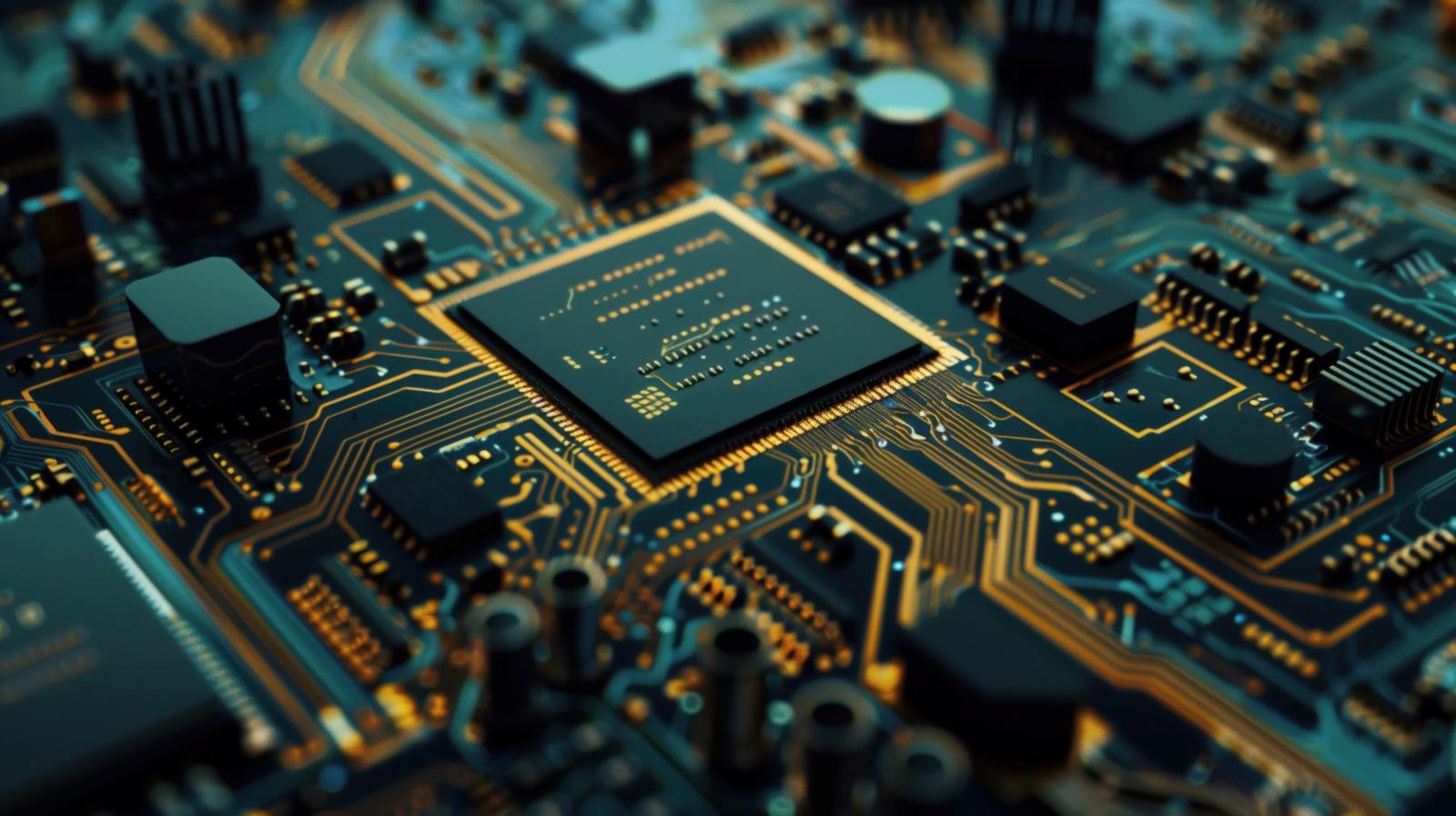A CPU (Central Processing Unit) is the brain of any computing device, but not all CPUs are created equal. Different architectures define how a CPU processes data, performs calculations, and interacts with software. The three most notable architectures today are x86, ARM, and RISC-V. Each has its strengths, weaknesses, and specific use cases.
In this page, we’ll take a journey through the fascinating world of CPU architectures, exploring how they evolved, their differences, and what the future holds.
On This Page
Table of Contents
What is CPU Architecture?
Before diving into specific architectures, let’s understand the basics. A CPU architecture defines:
- The instruction set architecture (ISA): A set of commands a CPU can execute.
- The microarchitecture: How the CPU processes these instructions internally.
- The power efficiency: How well it balances performance and power consumption.
- The compatibility: What kind of software it supports.
Simply put, the architecture is the blueprint that determines how a CPU functions.
x86 Architecture: The Legacy Powerhouse
The x86 architecture has been the cornerstone of computing for decades. Developed by Intel in the late 1970s, it has powered everything from early desktops to modern high-performance servers.
Evolution of x86
| Year | Processor | Key Advancement |
|---|---|---|
| 1978 | Intel 8086 | Birth of x86 architecture |
| 1985 | Intel 80386 | Introduced 32-bit computing |
| 1993 | Intel Pentium | Improved floating-point performance |
| 2003 | AMD64 | First 64-bit x86 processor |
| 2021 | Intel Alder Lake | Hybrid architecture (P-cores & E-cores) |
Strengths of x86
✅ High Performance: Ideal for demanding applications like gaming and video editing.
✅ Backward Compatibility: Can run software designed decades ago.
✅ Diverse Software Support: Most desktop applications are optimized for x86.
Weaknesses of x86
❌ Power Consumption: Consumes more energy than ARM processors.
❌ Complexity: Requires more transistors, making CPUs more expensive.
Where is x86 Used?
- PCs & Laptops: Dominates Windows and Linux-based systems.
- Gaming Consoles: Xbox and PlayStation have used x86 processors.
- Servers & Workstations: Powering cloud computing and enterprise workloads.
ARM Architecture: The Mobile Revolution
While x86 reigns supreme in desktops, the world of mobile and embedded systems is ruled by ARM. ARM Holdings developed this architecture in the 1980s with a focus on power efficiency.
Evolution of ARM
| Year | Processor | Key Advancement |
|---|---|---|
| 1985 | Acorn RISC Machine | First ARM prototype |
| 1991 | ARM6 | Became widely adopted in embedded systems |
| 2013 | Cortex-A57 | 64-bit ARM architecture |
| 2020 | Apple M1 | First ARM-based Mac processor |
Strengths of ARM
✅ Energy Efficiency: Consumes less power, extending battery life.
✅ Scalability: Used in smartphones, tablets, and even supercomputers.
✅ Customizability: Companies like Apple and Qualcomm design their own ARM chips.
Weaknesses of ARM
❌ Software Compatibility: Some x86 applications don’t run natively on ARM.
❌ Performance Limitations: Traditionally, ARM has been slower than x86 in raw power.
Where is ARM Used?
- Smartphones & Tablets: Almost every mobile device uses ARM.
- IoT & Embedded Devices: Smartwatches, TVs, and smart home gadgets.
- MacBooks: Apple transitioned from Intel to ARM-based M-series chips.
RISC-V: The Open-Source Challenger
A new contender is entering the race—RISC-V. Unlike x86 and ARM, which are proprietary, RISC-V is open-source, meaning anyone can design and manufacture processors based on its architecture.
Why is RISC-V Important?
- Freedom from Licensing Fees: Unlike ARM, RISC-V is free to use.
- Highly Customizable: Companies can tailor it to specific needs.
- Growing Ecosystem: More companies are investing in RISC-V for AI and embedded systems.
Where is RISC-V Used?
- IoT & Embedded Devices: Due to its flexibility.
- AI & Machine Learning: Optimized designs for high-speed computations.
- Academic Research: Used in universities for innovation in CPU design.
Comparing x86, ARM, and RISC-V
How do these architectures stack up against each other?
| Feature | x86 | ARM | RISC-V |
|---|---|---|---|
| Performance | ⭐⭐⭐⭐⭐ | ⭐⭐⭐ | ⭐⭐⭐ |
| Power Efficiency | ⭐⭐ | ⭐⭐⭐⭐⭐ | ⭐⭐⭐⭐ |
| Software Compatibility | ⭐⭐⭐⭐⭐ | ⭐⭐⭐ | ⭐⭐ |
| Cost | Expensive | Moderate | Low (Open-source) |
| Customization | Low | High | Very High |
Future Trends in CPU Architecture
The landscape of computing is evolving rapidly. Here are some key trends shaping the future:
1. Power Efficiency Over Raw Performance
With increasing demand for mobile and cloud computing, power efficiency is more critical than ever. ARM and RISC-V are leading this shift.
2. AI and Machine Learning Integration
Modern CPUs are integrating AI accelerators to speed up tasks like voice recognition and image processing. Apple’s M-series chips and Intel’s AI-focused cores are examples.
3. Custom Silicon Development
Companies like Apple, Google, and Tesla are designing their own custom processors instead of relying on traditional CPU makers.
4. The Rise of RISC-V
As more companies seek freedom from licensing costs, RISC-V could disrupt the industry, especially in IoT and AI applications.
WrapUP
CPU architectures define the performance, power efficiency, and compatibility of our devices. While x86 dominates desktops and servers, ARM rules mobile and embedded systems, and RISC-V is emerging as an open-source alternative.
As technology advances, the future will see more specialization, power-efficient designs, and AI-driven computing. Whether you’re a tech enthusiast or an industry professional, staying informed about CPU architectures will help you understand the rapidly evolving world of computing.
So, next time you buy a laptop or smartphone, take a moment to think about the architecture that powers it—because the choice of CPU matters more than you think!

FAQs
What is CPU architecture?
CPU architecture refers to the design and structure of a processor, including its instruction set, power efficiency, and compatibility with software.
What is the difference between x86 and ARM?
x86 is a powerful, high-performance architecture used in PCs, laptops, and servers but consumes more power.
ARM is a power-efficient, mobile-friendly architecture used in smartphones, tablets, and embedded systems.
Why is ARM more power-efficient than x86?
ARM uses a RISC (Reduced Instruction Set Computing) approach, requiring fewer instructions per task, reducing power consumption and improving battery life in mobile devices.
What is RISC-V, and why is it gaining popularity?
RISC-V is an open-source CPU architecture that allows companies to design their own processors without licensing fees. It’s gaining traction in AI, IoT, and academic research.
Can I run Windows on an ARM processor?
Yes, but with limitations. Windows on ARM supports some applications natively, but others require emulation, which can reduce performance.
Is x86 becoming obsolete?
Not yet. While ARM is growing, x86 is still dominant in gaming, high-performance computing, and enterprise servers. However, custom silicon and ARM-based chips (like Apple M-series) are challenging its dominance.
Why are Apple’s M-series chips so powerful?
Apple’s M1, M2, and M3 chips are based on ARM architecture but optimized with custom cores, unified memory, and hardware acceleration for better efficiency and performance.
Will RISC-V replace x86 and ARM?
RISC-V has potential, especially in IoT and AI applications, but it still lacks software ecosystem support compared to x86 and ARM.
Why do gaming PCs and consoles still use x86?
x86 offers high performance, backward compatibility, and optimized gaming software, making it the preferred choice for gaming PCs, Xbox, and PlayStation.
What is the future of CPU architecture?
The future will focus on power efficiency, AI-driven processing, and custom silicon development, with ARM and RISC-V playing a more significant role alongside x86 in high-performance computing.









